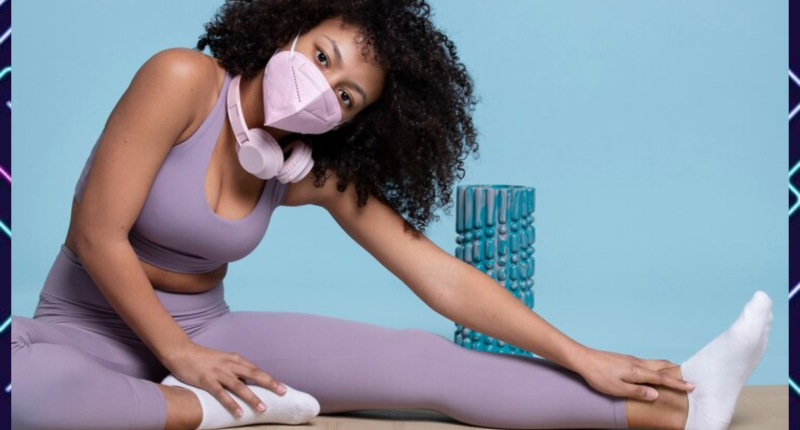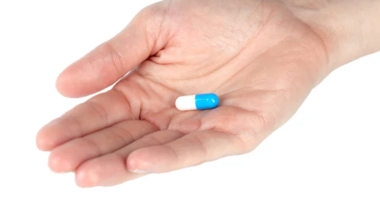Exercising in tight gym wear has its benefits and negative side effects. Some of the advantages of wearing hugged gym wear during exercise include enhanced muscle support, reduced muscle vibration, and protection against injuries and abrasions. However, the potential drawbacks mainly stem from the materials used in these garments and how they interact with the human body during physical activity.
Synthetic materials like Spandex, nylon, and polyester, commonly found in gym wear, are derived from oil and often contain harmful chemicals such as phthalates and bisphenols. Researchers at the University of Birmingham found that sweat can leach these chemicals from the plastic in gym wear, increasing the likelihood of absorption through the skin. This can lead to serious health issues. Additionally, the oil in sweat can promote the dissolution and spreading of these chemicals, further emphasizing the potential harm. Here are possible side effects of wearing tight gym wear while exercising
Breast Cancer
Wearing a tight bra for extended periods has been linked to a higher risk of breast cancer, although correlation does not necessarily imply causation. Properly fitting bras are recommended to avoid discomfort and potential health issues
Asthma
Asthma is a chronic condition that affects the airways in the lungs. Tight gym wear made with certain materials like synthetic or certain chemicals can release chemicals like BPA, phthalates, and bisphenols, which can be absorbed through the skin during exercise. Another possible occurrence is that it can irritate the skin and cause numbness, which can be uncomfortable and distracting during exercise. This discomfort might make it seem harder to breathe.
Heart disease
Because of the chemicals like BPA that can be absorbed through sweat, heart disease can be triggered. Very tight clothing that restricts blood flow could be uncomfortable and potentially risky, especially for people with pre-existing circulatory problems.
ALSO READ: What happens to your body when you stop wearing bra?
Infections
Another concern is the growth of bacteria and fungi in tight, sweaty gym wear. Tight clothing that does not breathe well can hold moisture in areas prone to fungal infections, such as the groin area, leading to conditions like jock itch and ringworm. These infections can cause discomfort and, in some cases, be transmitted to others. Similarly, the warm, moist environment created by sweaty workout gear can facilitate the growth of Staphylococcus bacteria, which can lead to serious infections, including potentially life-threatening ones.
Obesity
Obesity is a complex condition influenced by multiple factors, including diet, physical activity, genetics, and lifestyle. Wearing tight gym wear while exercising is just one aspect of a broader set of factors. Tight gym wear, particularly sports bras and athletic wear, can contain high levels of BPA, a chemical linked to obesity. When you sweat, the oil in your perspiration can pull harmful chemicals out of the plastic in your clothes, making them more likely to be absorbed through the skin. This means that the more you sweat, the more chemicals you could potentially absorb. Nevertheless, the relationship between BPA and obesity is still being researched, and more studies are needed to establish a direct causal link.
Other conditions
Wearing tight gym wear for extended periods can lead to other health issues. For instance, wearing overly tight compression bras can result in chest ulcers, especially for individuals with larger bust sizes. This is due to the constant pressure and friction against the skin, leading to damage and open sores. Furthermore, forgetting to change out of sweaty workout gear can contribute to conditions like athlete’s foot, which thrives in the warm, moist environment created by damp socks and shoes.
What you should do

To mitigate the risk of exposure to these harmful chemicals, it is recommended to opt for clothing made from sustainably produced, minimally processed natural textiles such as organic cotton, hemp, or merino wool. When purchasing gym wear, checking for certifications from third-party textile certifiers like GOTS and OEKO-TEX can help ensure that the products are free from toxic chemicals. Additionally, washing new clothing before wearing it can help remove some of the chemicals used in manufacturing. For those already owning synthetic gym wear, minimizing contact with the skin and changing immediately after workouts can reduce exposure
Extra resources
- https://www.ncbi.nlm.nih.gov/pmc/articles/PMC9051004/
- https://www.ncbi.nlm.nih.gov/pmc/articles/PMC4306786/
- https://www.ncbi.nlm.nih.gov/pmc/articles/PMC8949383/
- https://www.healthline.com/health/tight-clothes
ALSO READ: Should You Wear Makeup To Exercise Or For Gym Workout? Here’s What Experts Say










